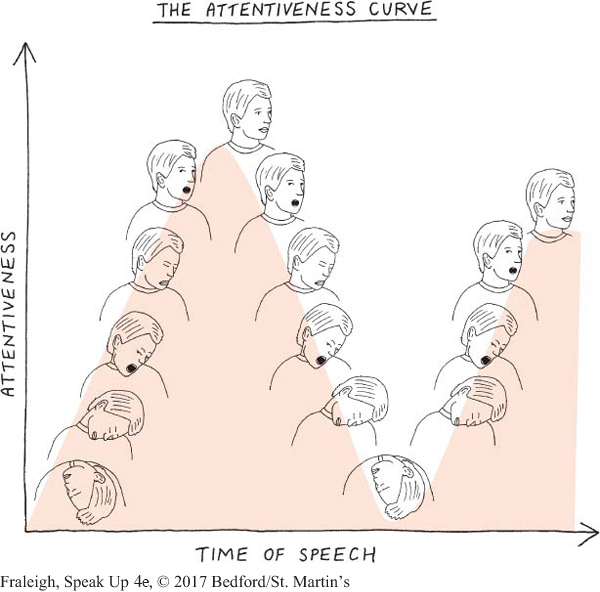Retaining What You’ve Processed
The more carefully you process what you’re hearing, the more you will engage your powers of retention—your ability to remember what you’ve heard. In fact, one of the authors of this textbook joined in a ten-year study of listening patterns and found that poor retention of a speech was directly related to audience attentiveness during the presentation.8 This study also found that individuals with poor attention habits remembered only a fraction (25 percent or less) of what was said in a speech. Worse, what they could recall was often inaccurate or confused with something else they had in their heads at the time of the presentation. Among people who fail to process what they’re hearing, the ability to accurately recall what was heard decays just three to six hours after the original communication.
Page 97
The study also revealed a recurring pattern of attentiveness—called “the attentiveness curve”—in people who did not listen well. At the beginning of a presentation, poor listeners tended to pay little attention. Their attention quickly improved as the presentation continued (perhaps because they realized they should have been paying attention), just as quickly fell to a low level, and finally rebounded near the end of the speech. Clearly, their sporadic levels of attention made it much harder for these listeners to process messages; it is no wonder, then, that they retained very little.
To further see the connection between processing and retention, consider your own listening behavior as a student. How much information do you retain if you pay little attention to your instructors in class? If you take notes during lectures, how accurate are they? How much do you remember from lectures in which you did not process what you were hearing? There’s no doubt about it: the more carefully you process messages, the more likely you’ll remember what you heard—and retain it accurately.
Page 98
In the next section, we analyze listening behavior further by examining the different types of listening styles.
